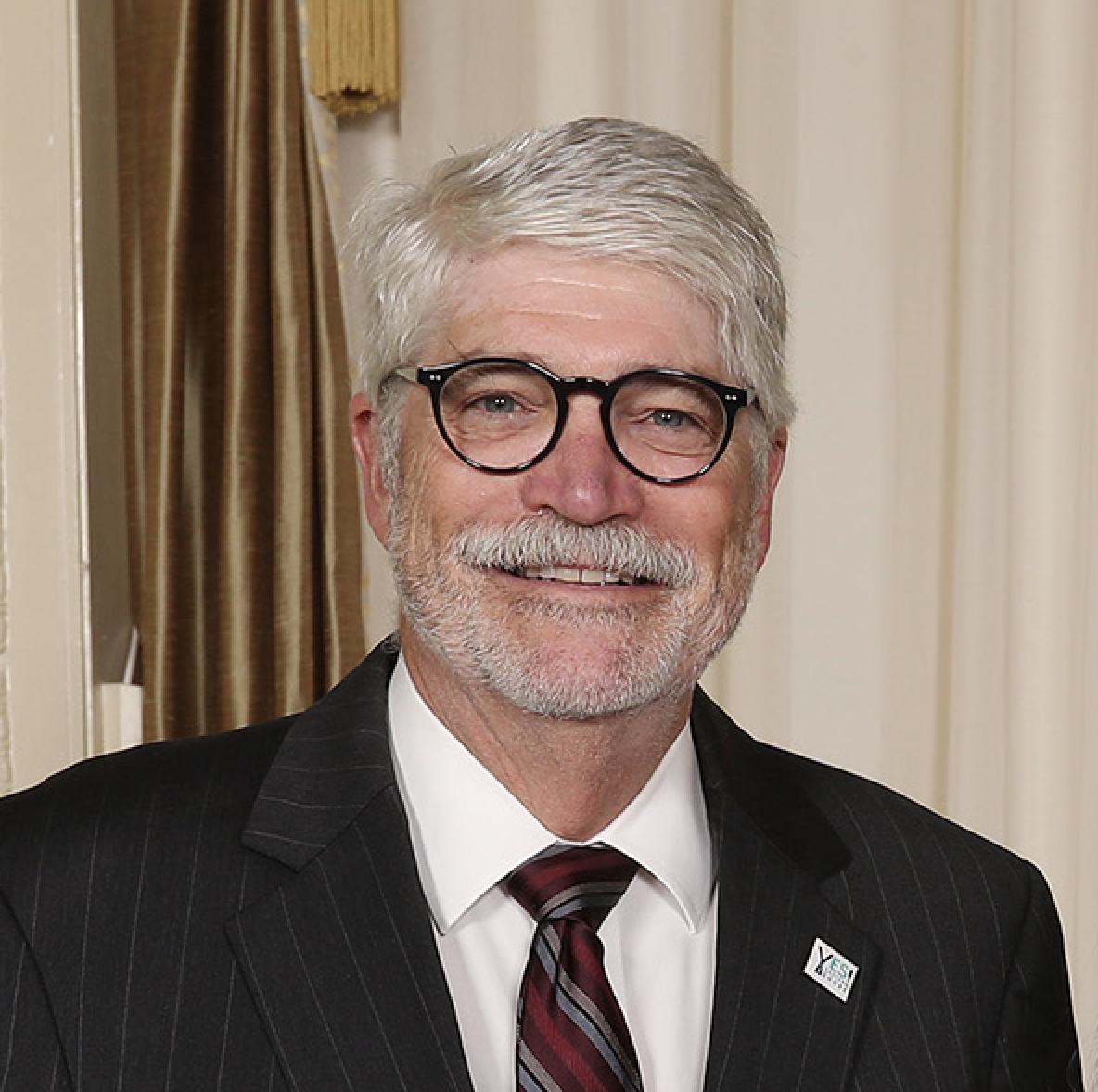Leadership with a Personal Touch

ESCC President James Shaeffer with commencement speaker Judge Jamar Walker. Photos courtesy of Jim Shaeffer.
Leadership with a Personal Touch
A Q&A reflecting on the role of a rural community college president
Many rural regions depend on their one and only post-secondary school to educate the residents of their communities. About one-quarter of all colleges in the United States are in low-populated, isolated settings—and these educate over 670,000 students. Two-hundred and sixty of these schools are two-year institutions.

For this second Collegial Conversation, I spoke with James Shaeffer, president of the Eastern Shore Community College (ESCC), Virginia’s smallest public college. Located on the peninsula between the Chesapeake Bay and the Atlantic Ocean, ESCC’s 14 full-time faculty and 30 staff members serve just under 2,000 students in their first two years of college or in workforce development programs.
This interview has been edited for length and clarity.
Q&A
Jay Halfond: Before you arrived at ESCC in 2019, you’d only known large comprehensive universities. What was the major change moving to ESCC?
Jim Shaeffer: I spent more than 40 years at research universities. I wish I had discovered community colleges 20 years earlier—this is my first job where my mission and passion match the institution’s. The challenge of this rural college is the large share of the 43,000 residents on the 72-mile Eastern Shore who are either working poor or in poverty. Ours is their only college. This makes our mission clear: to serve students who would otherwise not be able to access higher education. This is what drives us daily in all of our decisions and activities.
It breaks my heart when students tell me we are their “safe place.” About 80 percent of our students are Pell-eligible. Many come from impoverished backgrounds, some homeschooled. Many are immigrants, from Haiti and elsewhere. We recently taught English to about three hundred Haitians in our ESL program. Also, we raised money to support our DACA students.
Jay Halfond: One of the immediate challenges you faced as president of ESCC was that the Commonwealth of Virginia had placed the college on probation just prior to your arrival. Its viability as an institution was in question. How did you address that crisis?
Jim Shaeffer: The college was on “reboot,” which greeted me on my arrival. This was based on four indicators: the population size of the surrounding community; enrollments; operating expenses per student; and growth in workforce programs. ESCC was the only institution that had failed to meet all of these metrics. ESCC faced the very real possibility of being absorbed into a larger community college across the bay or eliminated altogether.
The reboot was lifted in 2022 when we were able to demonstrate our sustainability. We proved a small college with a personal touch could create a life-changing student experience and benefit to our community.
One of the smartest things we did was establish a “yes culture,” based on four tenets. The first is hospitality, to make all our people feel at home. Second is accountability in all we do. Third is inclusion—an example is that those at commencement walk whether they are GED students or completing a certificate or an associate’s degree. Fourth is transparency—we openly share all our numbers, enrollment and financials.
Jay Halfond: As a community college president, many things can occupy your time in any given day. What’s the major way you maximize your impact?
Jim Shaeffer: I structure my days so that I know which classes are scheduled, and I drop in. One of my favorite times is when they somehow make me part of the topic that day. Whether in communications, anatomy, our GED or ESL programs, welding, or HVAC, I just show up and chat. Then I try to end up in the Student Services Office and spend time there. We take advantage of our size and personalize everything.
Jay Halfond: Within ESCC, you lead by being visible. How are you visible in the outside community and how do you assess your impact?
Jim Shaeffer: I am active with local nonprofits and sit on several boards. I attend community festivities, write articles and editorials for our weekly and monthly newspapers, and routinely appear on local radio shows.
We work with the five high schools in the area, and now about 30 percent of our course registrations are dual enrollments. Our community refers to us, with pride, as simply “the College.” Over 1,000 people came to our recent commencement, which was live-streamed to about 5,000 more. This was an Eastern Shore celebration.
Jay Halfond: You are retiring at the end of this academic year. What are you hoping to accomplish before then?
Jim Shaeffer: I’ve raised start-up funds to launch an engineering program and a soccer team. These will be a major source of pride and opportunity for our community.
As I approach retirement the most gratifying aspect of my job is that I’ve been able to see results every day. I wouldn’t have traded this for anything in the world. It wasn’t just a job—it’s been a calling.
Collegial Conversations is a series of interviews that explore our vast academic landscape, highlighting what to celebrate or lament in America’s unique and often perplexing approach to higher education.
Jay Halfond is professor of the practice emeritus and former dean of Boston University’s Metropolitan College. He is a faculty member in BU Wheelock’s new executive EdD in Higher Education Leadership program.
Comments & Discussion
Boston University moderates comments to facilitate an informed, substantive, civil conversation. Abusive, profane, self-promotional, misleading, incoherent or off-topic comments will be rejected. Moderators are staffed during regular business hours (EST) and can only accept comments written in English. Statistics or facts must include a citation or a link to the citation.